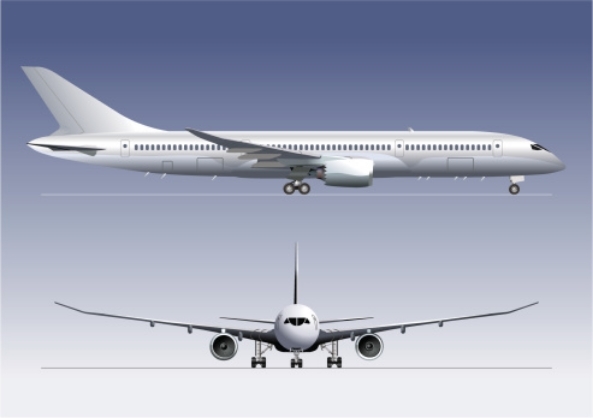Air transport began over 200 years ago. Here's a timeline of some of the major developments.
1783
The Montgolfier brothers launched their first hot air balloon.
Read about the Montgolfier brothers on kidcyber
http://kidcyber.com.au/topics/technology-inventions/airships-balloons/
1852
The first airship, fitted with a steam engine was flown by Henri Giffard from Paris. The airship could only fly forward.
1903
The Wright Brothers made the first engine powered flight in 'The Flyer'. It flew for 12 seconds and travelled 37 metres.
Read the kidcyber page about the Wright Brothers
1915
The first all metal plane was built by a German, Herman Junkers. It travelled at 170 km per hour.
1926
The first sea plane, having one or two floats in place of the usual under carriage, this plane took off from, and landed on, water.
Floats under the sea plane meant that it could land and take off from water ©Stock
1930s
Flying boats were used to cross oceans because aircraft could not carry enough fuel to travel long distances non-stop. Flying boats could fly between seaports and islands, refuelling as they went. They didn't need runways, and it was thought to be safer to fly across water in an aircraft that could float. Flying boats have floats where the undercarriage would be on a land-based aircraft.
In the 1930s the use of twin (two) engines enabled planes to carry more passengers.
1940
Modern helicopters carry passengers in and around cities.©Getty Images
The first practical helicopter which could carry passengers, was developed. Before this, a helicopter that could get off the ground and move in all directions, was invented by Russian-American Igor Sikorsky. His design used a large rotor on top for lift, and a tail rotor to keep the craft steady, flew in 1939.
The word ‘helicopter’ is made of two Greek words: helico meaning ‘spiral’ and pter meaning ‘one with wings’ (like pterodactyl).
How does a helicopter fly?
On a helicopter the wings are called rotor blades. The rotor blades have an aerofoil shape, curved on the top and flat on the bottom, just like the wings of an aeroplane. When the rotor blades rotate, the pressure of the air flowing under the blades is greater than the fast-moving air above them. The strong pressure below pushes the helicopter into the air, giving it the lift it needs to fly. To move up, down, forward or backward or to hover motionless in the air, the pilot changes the angle or tilt of the helicopter's rotor blades. The tail rotor blade stops the helicopter from spinning around in a circle.
The Spruce Goose was made of wood
1947
This flying boat, 'Spruce Goose' was built of wood. It only flew once, over a distance of about 2 kilometres. It is the largest plane ever built.
1950s
Early jet liners carried about 40 passengers, and had jet engines with propellers called turbo-prop engines.
The first jet engine was invented by British engineer, Frank Whittle in 1930
1952
Jet passenger planes had turbo-jets and no longer needed propellers.
Jet powered planes could fly further and carry more passengers
How does the jet engine work?
Air is sucked into the front of a jet engine and is compressed (squashed) by powerful fans, called turbofans. The compressed air is mixed with fuel and ignited. As the fuel burns, hot gases rush out of the back of the engine, pushing the aircraft along. As the gas leaves the engine, it spins turbines which make the turbofans at the front of the engine work.
Watch an animation of how a jet engine works
Air is sucked into the front of the jet engine.
After a disasterous crash in 2000, and other matters, Concorde was taken out of service in 2003.
1969
Commercial jet liners were able to carry over 400 passengers After a disasterous crash in 2000, and other matters, Concorde was taken out of service in 2003.
1968
The Russian built Tupolev Tu-144 was the first supersonic passenger aircraft. It flew on December 31, 1968; two months ahead of the first flight for the Concorde SST. Concorde flew at speeds of up to 2100 kilometres per hour carrying 100 passengers.
Space shuttle was a re usable space craft (1981)
1981
The first re-usable space vehicle, the space shuttle 'Colombia' was launched.
2005
The largest passenger aircraft, (so far!) the double-decked, Airbus A380 can carry more than 800 passengers.
2013
The 787 Dreamliner a long-range, mid-size wide-body, twin-engine jet airliner came into service. It is can carry up to 250 passengers. It is a lighter and more energy efficient aeroplane.












